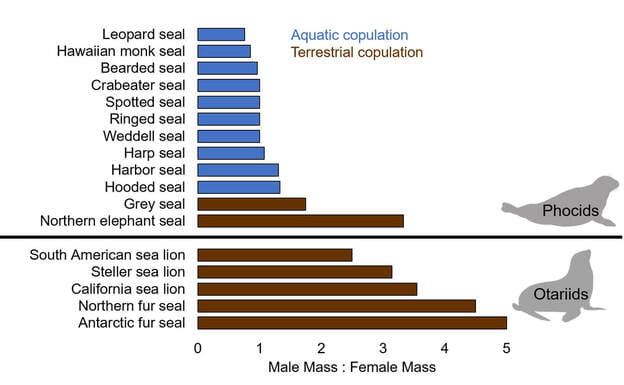National Science Foundation, 2024-2026, $1,248,757
Field-based Undergraduate Training: Utilizing Research for Equity (FUTURE) in Biology
PI: Roxanne Beltran Co-PIs: Robin Dunkin & Erika Zavaleta

A major priority in higher education is to improve retention of students from marginalized groups and support them through admission to graduate school and employment in the expanding STEM workforce. Although field courses show promise for recruitment and persistence of marginalized undergraduate students, many questions remain about which design components are important to generate desired outcomes, and when in the undergraduate curriculum these opportunities should be offered. This project will build on existing strengths in equitable field-based teaching and diverse leadership to support 3 fellows to undertake research to improve field-based undergraduate training in the life sciences. This comprehensive support program for the Postdoc Fellows has the four goals: 1) Targeted recruitment, selection, and retention strategies including a professional development plan and identification of impactful, feasible projects; 2) Cultivating a community of practice in field teaching, education research, and diversity, equity, and inclusion to support success and networking; 3) Fostering connections outside the department and institution; and 4) Assessing and disseminating the program outcomes to turn knowledge into scalable solutions. By collaboratively designing and delivering a new field teaching program based on equity, safety, and cultural responsibility, the postdoc Fellows will transform the experiences of hundreds of undergraduate students and dozens of field course instructors.
Office of Naval Research Young Investigator Program, 2023-2026, $750,000
PI: Roxanne Beltran
The United States Navy’s position as one of the largest global maritime fleets and concurrent investment in the development and testing of sophisticated sonar technologies means negative interactions with marine wildlife are likely to occur. Identifying where marine organisms are most concentrated can reduce the frequency of negative Navy-wildlife interactions. Biological hotspots (areas of intense biological activity that promote feeding activity in higher trophic level species) have become an important monitoring tool for describing locations where certain species and environments are at greater risk. However, the research community lacks detailed information about the location of biological hotspots in the marine environment. Large marine vertebrates such as whales, seals, seabirds and sea turtles have been identified as ecosystem sentinels, or indicators of overall ecosystem processes and climate change impacts. Northern elephant seals (Mirounga angustirostris) are an ideal vessel for detecting hotspots of biological activity in the ocean because they are fast, quiet, far-ranging, and deep diving. Our research group co-leads a long-term elephant seal monitoring program which contains the tools to review what is known about hotspots and to understand how hotspots vary across scales using drones, stable isotope analysis, and instruments attached to animals. The research program can facilitate valuable quantitative skills development for undergraduate students, highlight career opportunities in the DoD workforce, and train graduate students to facilitate a safe field environment for future scientists. The proposed work cannot take place without considering the ethics of animal handling and compensating young field researchers. Thus, we propose a holistic research program for facilitating Navy-relevant research on biological hotspots grounded in ethical considerations and experiential learning. The characterization and subsequent avoidance of known biological hotspots pertaining to foraging, reproduction, migration, and multi-species aggregations of marine animals would be advantageous when planning Naval exercises. Avoiding these areas would not only reduce the direct impacts on the organisms, but also potential negative rippling effects to coastal communities dependent on ocean ecosystem services such as ecotourism and fisheries.
Office of Naval Research, Marine Mammals and Biology Program, 2022-2025, $499,128
Targeted management approaches for minimizing Navy activity impacts
on long-lived vertebrates
PI: Roxanne Beltran
Partners: Dan Costa, Dan Crocker, Marm Kilpatrick, Patrick Robinson
Significant progress has been made linking behavior with health and vital rates to predict the potential for a Population Consequence of Disturbance (PCoD). PCoD models rely on input parameters such as survival and reproductive rates that have generally been thought to adequately represent the population. However, these demographic measures are typically derived from population averages, assuming that the likelihoods of survival and reproduction are equivalent across individuals. Recent research in long-lived vertebrates has discovered that the likelihoods of reproduction and survival are highly variable across individuals. Therefore, the population consequence of a disturbance is not likely to impact individuals across all demographic groups equally. For example, some females might be particularly resilient to disturbance whereas others might be more sensitive. Data on northern elephant seals (Mirounga angustirostris) and bottlenose dolphins (Tursiops truncatus) has shown that a few individuals appear to be more resilient to interannual variations in resource limitation or other stressors and thus disproportionately contribute to population viability; however, traits that contribute to this resilience are not known. We propose that targeted management should account for this individual heterogeneity because a disturbance can have a tremendously variable impact on population dynamics depending on the characteristics of the disturbed animals. To quantify the importance of individual variability for management efforts informed by PCoD models, we will integrate multiple sources of data from northern elephant seals. In this robust model system, critical data on the phenological, ecological, physiological, and genetic drivers of lifetime fitness can be consistently obtained. Our research will leverage existing long-term data and produce new data to answer the following questions: (1) Which phenotypic and/or genotypic traits mediate lifetime reproductive success (LRS)? (2) How does the relationship between chronological age (i.e., time since birth) and biological age (i.e., markers for DNA methylation in the blood) relate to LRS? (3) What are the implications of variation in LRS for population dynamics and management? First, we will evaluate whether phenotypic traits (at-sea behavior, diet, life-history phenology) and/or genotype modulate individual heterogeneity in LRS. As an alternative explanation, we will explore whether variation in LRS simply occurs due to random chance. Next, we will leverage existing samples to quantify similarities between chronological and biological age and determine the degree to which LRS impacts these epigenetic health metrics. Finally, we will synthesize the findings above by modeling the impact of variation in female LRS on population dynamics under targeted versus random management approaches. Understanding the timing and location of key life history events of the most demographically valuable individuals can help to strategically plan Navy activities in space and time to minimize the impacts of disturbance. These findings will help quantify the population consequences of a Naval exercise, which can be applied to other threatened, endangered, and at-risk species such as beaked whales that are of high concern to the ONR Marine Mammals and Biology Program. Our work will also set the stage for elucidating the interactions between Navy exercises and climate change, as marine mammal core habitats become displaced and potentially overlap with active Navy sonar training areas. Finally, this work will involve several cohorts of undergraduate researchers, which will facilitate student engagement and increase the likelihood that under-represented students will join the STEM and DoD workforce.

Beckman Young Investigator award, 2021-2025, $600,000
A novel acoustic recorder for eavesdropping on the ocean soundscape
PI: Roxanne Beltran
Partners: Holger Klinck, Dan Costa
Man-made sounds disrupt and, in extreme cases, kill marine mammals around the world. However, the ocean soundscape as a whole remains poorly understood, especially in offshore regions. To characterize the natural and human-generated sounds that marine vertebrates experience, and to measure the detrimental impacts of anthropogenic noise, we will develop and implement groundbreaking new technology – a miniature, self-contained acoustic recorder designed for underwater applications. By attaching this new technology to wild elephant seals that migrate ~10,000-kilometers each year, we will provide the first large-scale recordings of the open ocean and the twilight zone (200-1000 meters below the ocean surface). Each new tag will provide ~70 days of audio recordings for only $5,000, approximately 100 times cheaper and infinitely less noisy than the vessels used for traditional acoustic surveys. This project would represent the first long-term application of animals as platforms for recording sound. By enabling more comprehensive monitoring of ocean noise and revealing the most prevalent and harmful sound sources, we will provide valuable recommendations for marine mammal conservation, including the designation of future Marine Protected Areas.
National Science Foundation, 2021-2025, $1,203,543
Rules of death across ontogeny in sexually dimorphic mammals
PI: Roxanne Beltran
Co-PI: Dan Costa
Subawardees: Nicole Thometz, Sarah Kienle

For sexually size dimorphic species, it is unknown how ecological processes such as starvation and predation act upon the disparate physiological and behavioral phenotypes of males and females. This project aims to determine how male and female body size differences throughout ontogeny lead to divergent use of the risk-reward landscape. Male and female northern elephant seals will be anesthetized, measured, weighed, instrumented, and sampled from birth through age four. The resulting data will link three biological disciplines: physiological measurements of diving development and energy demands, behavioral partitioning of 3-dimensional space use and diet due to physiological constraints, and ecological consequences of variation in physiology and niche partitioning. A meta-analysis across all seal, sea lion, and walrus species will be used to evaluate how sex-specific mortality rates correlate with the degree of polygyny and sexual size dimorphism more broadly. Together, these aims will determine how ecological risk and reward interact with physiological constraints to drive the ontogenetic development of behavioral strategies in sexually dimorphic mammals.
Packard Fellowship for Science and Engineering, 2021-2026, $875,000
PI: Roxanne Beltran
We currently lack an ecosystem-scale understanding of the ocean. Despite recent miniaturization of technologies for ocean monitoring, platforms for carrying the sensors have remained disconnected from each other and highly limited in their spatial and temporal coverage. I propose to measure ocean health on an unprecedented scale, using migrating elephant seals as “smart sensors” to carry a suite of innovative tools for holistically observing the ecosystem. Millions of hours of integrated monitoring data collected by elephant seals will transform our fundamental understanding of the high seas. I will produce a high-resolution map of marine biodiversity, including top predators that have successfully eluded human detection in the open ocean but provide irreplaceable ecosystem services and act as climate sentinels. My research will represent the first application of migratory animals as platforms for recording 3-dimensional environmental and ecological metrics at reasonable costs – a necessity for effective marine conservation and policy.